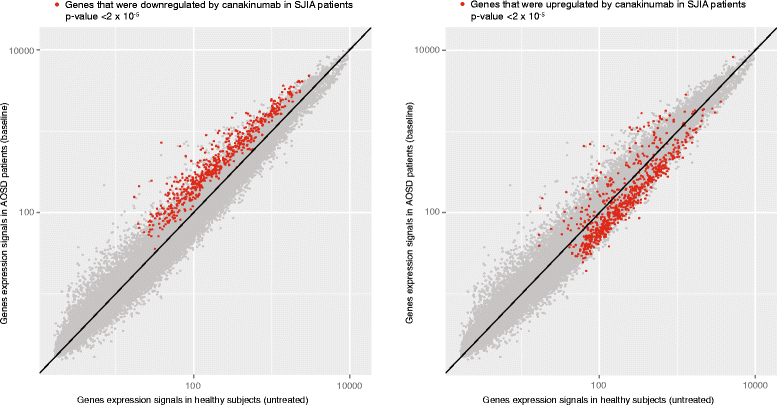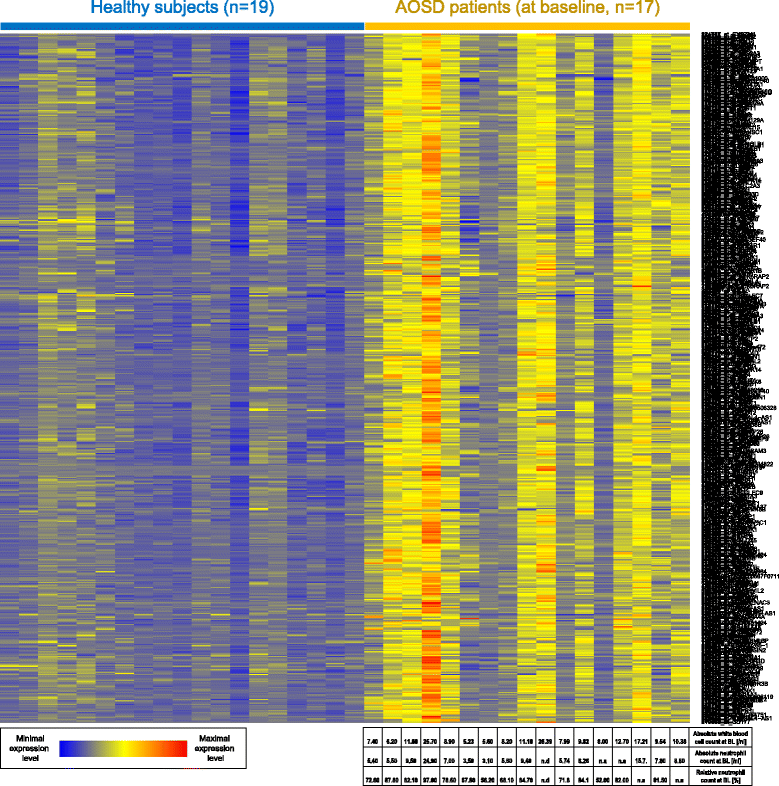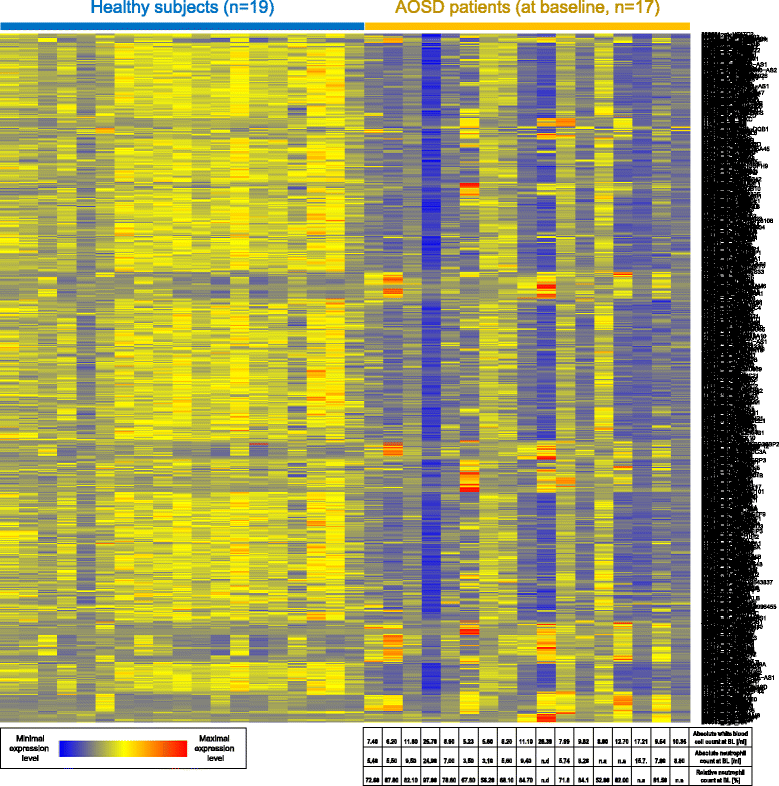Gene-expression analysis of adult-onset Still's disease and systemic juvenile idiopathic arthritis is consistent with a continuum of a single disease entity
- PMID: 26589963
- PMCID: PMC4654831
- DOI: 10.1186/s12969-015-0047-3
Gene-expression analysis of adult-onset Still's disease and systemic juvenile idiopathic arthritis is consistent with a continuum of a single disease entity
Abstract
Background: Adult-onset Still's disease (AOSD), a rare autoinflammatory disorder, resembles systemic juvenile idiopathic arthritis (SJIA). The superimposable systemic clinical features of AOSD and SJIA suggest both clinical phenotypes represent the same disease continuum with different ages of onset. To further characterize the similarity between AOSD and SJIA at the molecular level, 2 previously identified response gene sets in SJIA were used to investigate how genes that respond to interleukin (IL)-1β inhibition with canakinumab in SJIA patients behave in AOSD patients with active disease prior to IL-1β targeting therapy, relative to healthy subjects.
Findings: All genes downregulated in SJIA patients following canakinumab treatment were upregulated in most patients with active AOSD prior to canakinumab treatment, relative to healthy subjects. A few patients with milder AOSD had expectedly gene-expression patterns that resembled those in healthy subjects. Comparison of the gene-expression patterns with neutrophil counts showed a correlation between elevated neutrophil numbers and upregulation of canakinumab-responsive genes. Correspondingly, most genes upregulated following canakinumab treatment in patients with SJIA patients were downregulated in the majority of AOSD patients.
Conclusions: These results further support the concept of a Still's disease continuum that includes both a pediatric/juvenile onset (SJIA) and adult onset (AOSD) form.
Trial registration: ClinicalTrials.gov NCT02204293.
Figures



References
-
- Luthi F, Zufferey P, Hofer MF, So AK. “Adolescent-onset Still’s disease”: characteristics and outcome in comparison with adult-onset Still’s disease. Clin Exp Rheumatol. 2002;20:427–30. - PubMed
Publication types
MeSH terms
Substances
Associated data
LinkOut - more resources
Full Text Sources
Other Literature Sources
Medical

